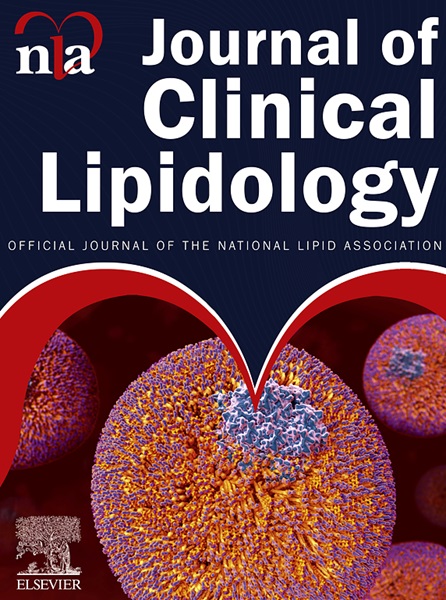1999-2023 年美国人口中患有高脂血症的年龄调整后心血管死亡率趋势:疾病预防控制中心奇妙数据库研究
摘要
背景/简介尽管近年来在管理高脂血症方面取得了进展,但美国普通人群的死亡率趋势仍未得到充分研究。人口变化方面证据的缺乏阻碍了在社区层面实施循证干预的能力。我们的综述是按照年龄、性别、种族或民族、城市化程度和人口普查地区等人口特征,分析美国居民中与高脂血症相关的死亡率趋势。此外,还对各州的年龄调整死亡率(AAMR)和高发病率州的县级数据进行了分析。 Objective/PurposePrevious studies have reported cardiovascular mortality rates in general, but they lack sufficient updated data and trends among variable demographic groups suffering from hyperlipidemia.此外,此前还没有任何研究显示死亡率与某些地理脆弱地区之间存在特定的相关性。方法我们从美国疾病预防控制中心 WONDER 数据库中的多死因/基本死亡病例档案中抽取了全国死亡率数据,这些数据是从全国范围内的死亡证明中检索出来的。我们使用 ICD-10 编码(E78.0-E78.9)来识别 1999 年至 2023 年期间美国人口中与高脂血症相关的死亡病例(包括家族性高胆固醇血症)。而心血管(循环)系统的 ICD 代码是通过使用 I00-I99 作为基本死因来确定的,作为一项敏感性分析,只测量高脂血症人群中与心血管相关的死亡率。使用连接点回归分析法(5.0.2 版)评估了年龄调整后死亡率(AAMR)的趋势,并报告了每 10 万人的数据。对于 10 年递增年龄组,仅报告粗死亡率。结果以年度百分比变化 (APC)、平均年度百分比变化 (AAPC) 和 95% 置信区间 (CI) 表示。结果1999年至2023年间,美国共有639,786名高脂血症患者死于心血管疾病(AAMR = 7.1/100,000;95% CI:7.0-7.2)。总体死亡率趋势以每年 6.21% 的速度增长(95% CI:5.41-7.01),女性死亡率在 1999-2006 年期间和 2018-2023 年期间均大幅上升;然而,在男性人群中,APC 在 1999-2006 年期间和 2018-2021 年期间分别明显上升。具体而言,各年龄组的粗死亡率趋势将以 10 年为单位递增,其中 1999-2004 年和 2018 年以后的上升幅度最大(P<0.001)。在所有亚群中,西班牙裔受影响最小;然而,非西班牙裔白人和最近的非西班牙裔黑人受影响越来越大(从 2018 年开始)。郊区和农村地区(2019 年以后)在城乡差别中都越来越普遍(P<0.001)。排名前 90 位的州包括佛蒙特州(粗死亡率 = 17.12)、西弗吉尼亚州(粗死亡率 = 14.07)、夏威夷州(粗死亡率 = 13.67)、北达科他州(粗死亡率 = 13.61)、罗得岛州(粗死亡率 = 13.38)和爱荷华州(粗死亡率 = 13.结论预计从 1999 年到 2023 年,确诊患有高脂血症的美国人的心血管死亡率总体呈上升趋势,但不同年龄组、性别、种族/民族、城市化程度和人口普查地区的趋势各不相同。这项研究将突出强调加强公共卫生监测的必要性,以便更好地了解与高脂血症相关的心血管死亡率的范围,并确定高风险人口和地区亚群,以便采取有针对性的干预措施。Background/Synopsis
Despite the progress made in managing hyperlipidemia in recent years, the mortality trends among the general population in the United States remain understudied. The lack of evidence in the demographic variations hampers the ability to implement evidence-based interventions on community-based levels. Our synthesis is to analyze the trends in hyperlipidemia-related mortality among United States residents by demographic characteristics such as age, gender, race or ethnicity, urbanization, and census region. Furthermore, state-wise age-adjusted mortality rates (AAMR) and county-wise data for highly prevalent states were subsequently analyzed.
Objective/Purpose
Prior studies have reported cardiovascular mortality rates in general, but they lack sufficiently updated data and trends among variable demographic groups suffering from hyperlipidemia. Furthermore, there haven't been any prior studies conducted to show specific correlations between mortality rates and certain geographically vulnerable areas.
Methods
We abstracted national mortality data from the multiple cause of death/underlying case of death files in the CDC WONDER database retrieved from death certificates nationwide. The ICD-10 codes (E78.0-E78.9) were used to identify any type of hyperlipidemia-related deaths (including familial hypercholesterolemia) among the United States population from 1999 to 2023 in the multiple causes of death section. While ICD codes for cardiovascular (circulatory) system were identified by using I00–I99 for the underlying cause of death as a sensitivity analysis to only measure cardiovascular-related mortality in the hyperlipidemic population. Trends in age-adjusted mortality rate (AAMR) were assessed using joinpoint regression analysis (version 5.0.2) and the data was reported per 100,000 population. For 10-year increment age groups, only crude mortality rates were reported. Results were expressed as annual percentage changes (APC), average annual percentage changes (AAPC), and 95% confidence intervals (CI). For urbanization, the 2013 NCHS Urban-Rural Classification Scheme for Counties was used.
Results
Between 1999 and 2023, a total of 639,786 hyperlipidemia patients died secondary to cardiovascular causes within the United States (AAMR = 7.1 per 100,000; 95% CI: 7.0–7.2). Overall mortality trends increased at an annual rate of 6.21% (95% CI: 5.41–7.01) and were much higher in females from 1999–2006 and then 2018–2023; however, in the male population, APC was evidently higher in 1999–2006 and 2018–2021, respectively. Specifically, the trends in crude mortality rate would increase with each age group in 10-year increments, with the most steep rises from 1999–2004 and then 2018 onwards (P<0.001). Hispanic race is least affected amongst all subgroups; however, both non-Hispanic whites and more recently non-Hispanic blacks were increasingly highly affected (from 2018 onwards). Both suburban and rural areas (after 2019) are increasingly prevalent across the rural-urban divide (P<0.001). States in the top 90th percentile included Vermont (crude rate = 17.12), West Virginia (crude rate = 14.07), Hawaii (crude rate = 13.67), North Dakota (crude rate = 13.61), Rhode Island (crude rate = 13.38), and Iowa (crude rate = 13.18).
Conclusions
Cardiovascular mortality among the US population with a diagnosis of hyperlipidemia has been anticipated to be increasing overall from 1999 to 2023, but with varying trends by age groups, gender, race/ethnicity, urbanization, and census region. This study will highlight the need for enhanced public health surveillance to better understand the scope of hyperlipidemia-related cardiovascular mortality and identify high-risk demographic and regional subgroups for targeted interventions.

 求助内容:
求助内容: 应助结果提醒方式:
应助结果提醒方式:


